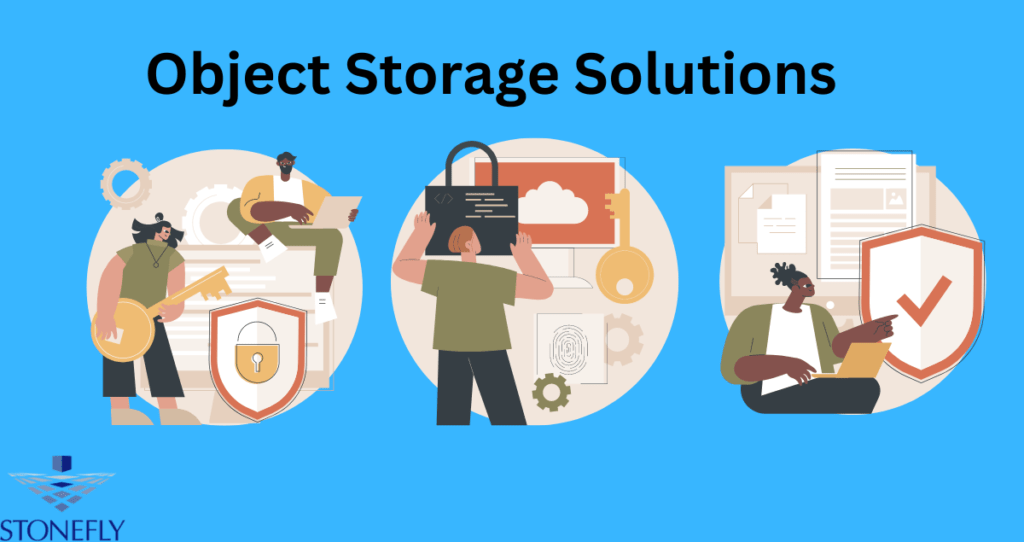Mastering AI/ML Training Data Versioning for Smarter Models
Building smart AI and machine learning (ML) systems starts with one essential ingredient: data. But as projects grow, it can be tricky to manage versions of your training data. What happens if your dataset evolves, or you need to roll back to an earlier version? This is where training data versioning steps in, like a librarian cataloging books in a library. It helps keep everything organized and accessible.
Let’s explore what training data versioning is, why it’s important, and how Object Storage Solutions can make managing your AI/ML workflow so much easier.
What Is AI/ML Training Data Versioning?
Imagine you’re writing a school paper. Each time you make big changes, you save a new version to track your progress. Training data versioning works the same way in AI and ML. It keeps a record of every version of your data as it changes over time.
AI and ML models rely heavily on training data to learn. The quality, quantity, and relevance of the data directly impacts how smart these models become. But as your projects evolve, you’ll often update your datasets. For example, you might collect new samples, clean out errors, or refine labels. Without a clear versioning system, keeping track of these updates can turn chaotic.
Versioning ensures that you always know which data was used to train a particular model. It’s like maintaining a trail of breadcrumbs for when you need to revisit your past work or investigate errors.
Why Object Storage Solutions Are Perfect for Data Versioning
When managing large datasets, your storage method matters. Object storage solutions are an excellent choice for handling data versioning. Why? They store information as “objects,” which include the file itself, metadata, and a unique identifier.
Here’s how object storage solutions make life easier:
- Scalability: They can manage huge amounts of data without a hitch. Whether you’re dealing with thousands or millions of data samples, object storage expands as you need.
- Flexibility: Each version of your dataset can be stored as a separate object, making it easy to reference or roll back to a specific version when needed.
- Cost Efficiency: Object storage usually offers pay-as-you-go pricing, so you don’t overpay for space you’re not using.
Think of object storage as a massive, organized digital filing cabinet. Every time you “file away” a new version of your training data, it is neatly labeled and easy to retrieve later.
Why Is Data Versioning Essential for AI/ML?
Ensuring Model Reproducibility
Reproducibility means being able to train a model in the exact same way, even months down the line. Without training data versioning, this is incredibly difficult. Developers could end up comparing apples to oranges, leading to unreliable results. By keeping data versions intact, you can guarantee consistency in your experiments.
Tracking Changes and Avoiding Errors
Imagine you accidentally deleted some important training data or made a mistake in labeling. Without versioning, fixing those mistakes can feel like trying to reconstruct a torn-up map. With versioning, though, you can easily jump back to an earlier point in your project.
Collaboration Made Easy
AI and ML projects often involve multiple people. Versioning acts as a shared History book for your team. Everyone can see what changed, who made the edits, and why. No more guessing or miscommunication.
How to Implement Data Versioning with Object Storage Solutions
1. Organizing Your Initial Data
Start by splitting your dataset into subsets, such as training, validation, and testing data. Upload these subsets to your object storage system. Use clear naming conventions, like data_v1_training or data_v2_testing, to make navigating your files simple.
2. Storing Metadata
Metadata acts like the label on a jar of jam. It tells you what’s inside without opening it. For your datasets, metadata might include the data sources, collection methods, and preprocessing steps. Most object storage solutions automatically handle this, storing metadata alongside each object.
3. Version Control Systems
Pair your object storage with a version control tool. Tools like DVC (Data Version Control) or Git can help you keep detailed logs of updates. Every time your data changes, check it into the system as a new version.
4. Testing and Logging
Once a dataset is updated, test how your AI model performs with the new version. Keep a log of results to track improvements or setbacks. This feedback loop ensures your project keeps moving in the right direction.
5. Archiving Older Versions
Over time, certain dataset versions might become outdated. Use your object storage system’s archiving tools to compress and store them. This ensures they don’t take up too much space, but you can still access them if needed.
Best Practices for Effective Data Versioning
Use Clear Naming Conventions
A clear naming system makes finding your data versions hassle-free. For instance, instead of random names like newdata-final or test123, go with organized labels like dataset_v2_august.
Automate Whenever Possible
Manually managing data versions can lead to mistakes. Automate your workflow using version control tools or scripts that update your data logs.
Verify Integrity Regularly
From time to time, check your stored files for corruption. Most object storage systems offer tools to do this automatically, helping keep your data safe.
Align Data With Models
Always map your datasets to specific models. This way, you can instantly trace back which data version produced a particular result.
Document Everything
Keep notes about why certain changes were made. Did you add or remove samples? Was there an issue with labels? These details will be invaluable later on.
Real-World Example of Training Data Versioning
Picture a company developing an AI-powered weather prediction model. The team updates its training data every month with new weather patterns and forecasts. Without versioning, they risk losing track of older data or overlooking errors. By using an object storage system and proper version control, they store each month’s data as a new version. If their predictions suddenly turn inaccurate, they can easily trace the issue back to a specific dataset version and correct it.
Another example is in healthcare. Researchers often refine datasets for diagnosing diseases using ML. Each change must be logged carefully since patient data is sensitive. Versioning ensures compliance and keeps the research accurate.
Concusion
Training data versioning is more than just a technical detail. It’s the backbone of reliable, effective AI and ML systems. Without version control, your projects can descend into chaos, making it harder to produce accurate results.
Thankfully, object storage solutions give you the tools to handle this challenge. They provide scalable, cost-effective ways to manage massive datasets while keeping everything organized and versioned. By combining object storage with best practices, you can save time, reduce errors, and focus on building smarter, more innovative models.
FAQs
1. Why do I need versioning for AI/ML training data?
Versioning helps track changes in your datasets, ensures model reproducibility, and makes troubleshooting easier. It’s especially valuable when collaborating with others or working on long-term projects.
2. How does object storage differ from other storage methods?
Object storage organizes files into self-contained “objects” with metadata, making them easier to retrieve and manage. Unlike traditional storage systems, it scales more easily and supports flexible data versioning.
3. What happens if I don’t version my training data?
Without versioning, you risk losing track of changes, making it harder to reproduce models or debug issues. It can also lead to wasted time and unreliable machine learning results.
4. Can I automate data versioning?
Yes, you can use tools like DVC or Git alongside object storage. These tools help track updates automatically and ensure your workflow runs smoothly.
5. How do I decide which version of data to use for training?
Always pick the most up-to-date version of your dataset unless there’s a specific issue you’re investigating. Keep logs of all versions to trace your decisions and improve accountability.














































